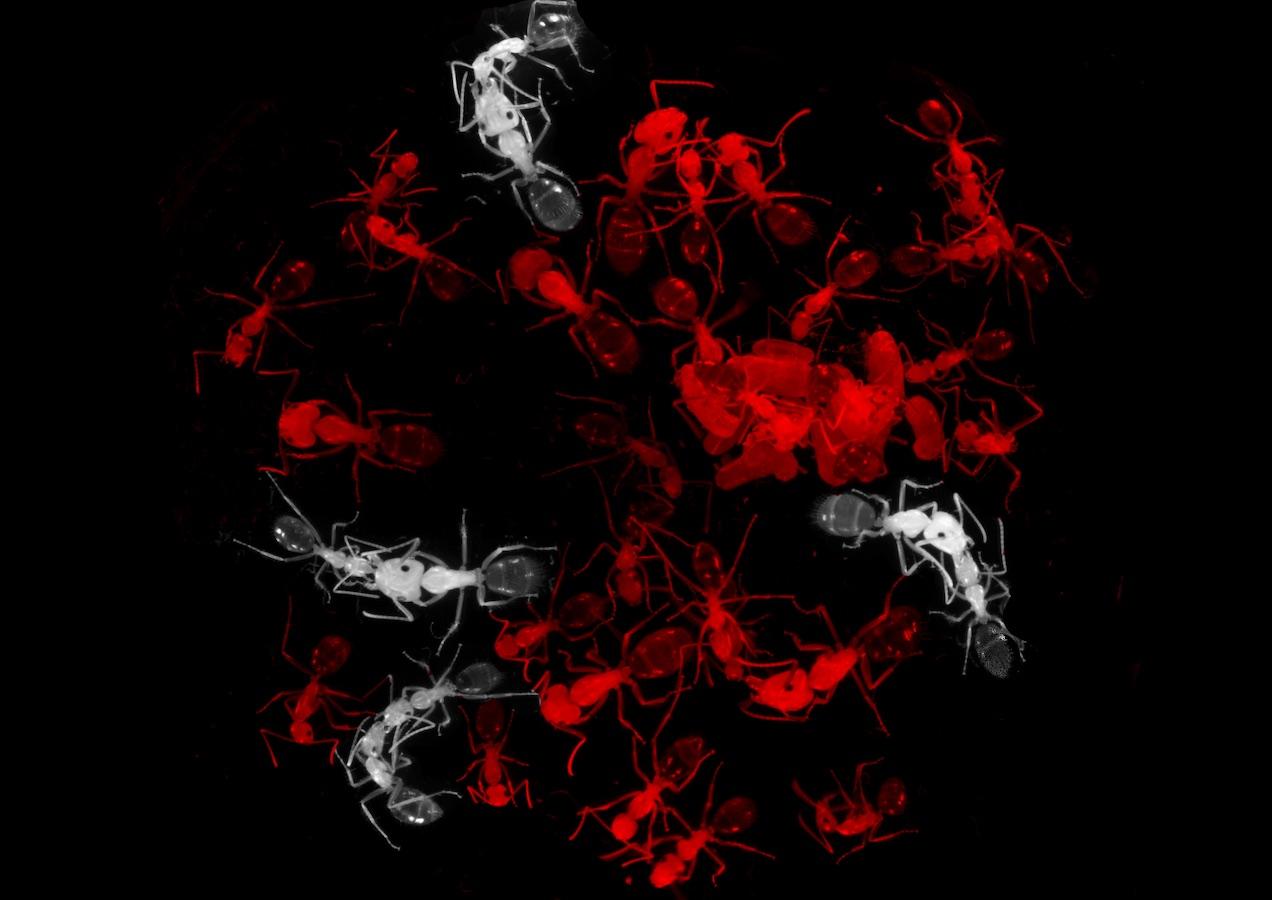
Convergent evolution of social regurgitation across Hymenoptera
Supervisor: Dr Adria LeBoeuf
Social fluids, like milk and seminal fluids allow one individual to manipulate or support another. Trophallaxis—the mouth-to-mouth transfer of fluids—has evolved independently multiple times across social Hymenoptera. Have the same gene families been co-opted or undergone similar selection across these independent gains of a social fluid? This project will leverage proteomics data from approximately 35 hymenopteran regurgitates spanning ants, bees, and wasps with varying degrees of sociality to investigate whether convergent adaptations have occurred across the different evolutionary origins of trophallaxis behaviour. You will conduct comparative proteomics analysis to identify shared protein families, convergent functional pathways, and species-specific adaptations in trophallactic fluids. The research will involve bioinformatics analysis of existing mass spectrometry data, phylogenetic mapping of trophallaxis evolution, and functional annotation of proteins to understand their roles in communication, nutrition, and social regulation. Depending on the candidate’s abilities and interests, we will work to functionally validate targets in the lab or model different lineages’ modes of metabolic division of labour.
Type of work
Computational analysis of existing proteomics datasets and genomes using bioinformatics tools and comparative genomics approaches. Depending on student interest and profile, laboratory work may be involved in validating computational predictions or modelling of social evolution.
Importance of the area of research concerned
Understanding convergent evolution at the molecular level provides insights into the predictability and constraints of evolutionary processes. By examining how similar social behaviours arose independently, with their concomitant molecular machinery, we learn about the genetic and biochemical basis of cooperation, with potential applications for pollinators, pest control and designing bio-inspired systems.
References
LeBoeuf AC, Waridel P, Brent CS, et al. Oral transfer of chemical cues, growth proteins and hormones in social insects. eLife. 2016;5:e20375.
Hakala SM, Meurville MP, Stumpe M, LeBoeuf AC. Biomarkers in a socially exchanged fluid reflect colony maturity, behavior, and distributed metabolism. eLife. 2021;10:e74005.
LeBoeuf AC, Cohanim AB, Stoffel C, et al. Molecular evolution of juvenile hormone esterase-like proteins in a socially exchanged fluid. Scientific Reports. 2018;8(1):17830.
Rossier V, Train C, Nevers Y, Robinson-Rechavi M, Dessimoz C. Matreex: Compact and Interactive Visualization for Scalable Studies of Large Gene Families. Genome Biol Evol. 2024 Jun 4;16(6):evae100. doi: 10.1093/gbe/evae100.
Vizueta J, Xiong Z, Ding G, Larsen RS, Ran H, Gao Q, Stiller J, Dai W, Jiang W, Zhao J, Guo C, Zhang X, Zuo D, Zhong W, Schiøtt M, Liu C, Zhang H, Dai X, Andreu I, Shi Y, Tretter S, He D, Gautam S, Li Z, Hickey G, Ivens ABF, Meurville MP, Hita-Garcia F, Kass JM, Guénard B, Moreau C, Paten B, LeBoeuf AC, Economo EP; GAGA Consortium; Chapuisat M, Shik JZ, Ward PS, Heinze J, Schultz TR, Li Q, Dunn RR, Sanders NJ, Liu W, Schrader L, Boomsma JJ, Zhang G. Adaptive radiation and social evolution of the ants. Cell. 2025 Jun 12:S0092-8674(25)00617-8. doi: 10.1016/j.cell.2025.05.030.
